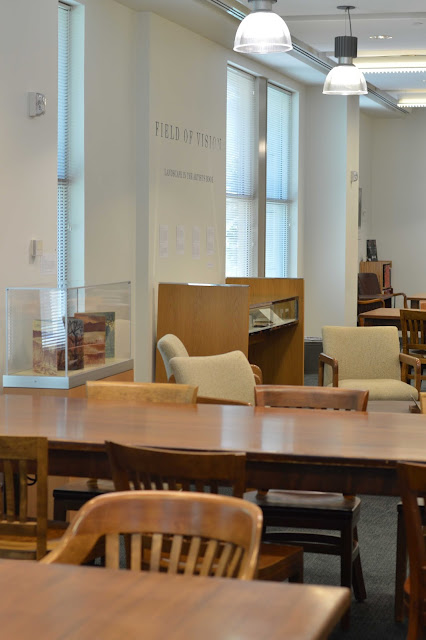When it comes to evaluating objects, not even the experts know everything. As I discovered at Antiques Roadshow, sometimes an unsigned painting is just an unsigned painting. A knowledgeable collector or dealer who specializes in a particular country or era can be of more help than the most educated generalist. And when the experts don’t know, there is an awful lot of research you can do on your own.
If you’ve been reading for a while, you might remember this painting that I found at the House of Mercy Thrift Store in Manassas. It is signed P. Goldsworthy, which turned out to be Philoma Colin Goldsworthy, a female California watercolorist and art educator in the San Jose City Schools.
In my initial Google search for information about Ms. Goldsworthy, I discovered that AskART.com, a database of artist biographies and auction information had her listed, but without being a paid subscriber, I couldn’t access her full biography. A quick call to my local library determined that they don’t have specialized art databases, but I’m lucky enough to be within easy striking distance of one of the best art collections in the entire world: The Smithsonian Institution. I figured between that and the Library of Congress, someone would have access to some niche databases.
And I was right! Following the first lesson I learned from my experience at Antiques Roadshow, I decided to be bold and see if they had database access and allowed the public to come use their collections. As it turns out, the Smithsonian American Art Museum Library is open to researchers and when I emailed the reference librarian, she said I was welcome to come use their databases any time. So yesterday I hopped in the car and drove downtown to 750 Ninth Street, NW, where the library is located (less than a block from the Smithsonian American Art Museum).
When I arrived, I got help from a full-time professional librarian and the library’s intern, both of whom were incredibly helpful providing suggestions for different research avenues to pursue and helping me find the best databases on their system and books in the reference section.
I was able to pull up the full text of the article about Philoma Goldsworthy from AskART.com and found out quite a lot. Ms. Goldsworthy was born in Stockton, California in 1895. She went to San Jose State University when it was still a teacher’s college. It appears that she never married. She seems to have been a force in the movement for art education in schools. She retired to Pacific Grove, California where she was active in the Heritage Society of Pacific Grove. She died in 1993 in Monterey, California. The back of my painting indicates that it was framed in Pacific Grove.
 |
| Philoma Goldsworthy watercolor with print-outs of biograpical information and journal references. |
I don’t know whether this is a common story among women of her generation, but by funny coincidence, I just finished reading Amos Klausner’s wonderful book on Heath Ceramics. Edith Heath, the founder of the company, was initially involved in arts education, first in Chicago and then in San Francisco when her husband’s job brought them West. As part of her training, she learned pottery, developed an interest in the chemistry of glazing and eventually through talent, determination and a certain amount of serendipity, formed and ran a successful company.
The reference librarian pointed out that in the AskART article, it referenced a couple of books where more information on Philoma Goldsworthy could be found. And while these turned out to be very brief biographical notes, it reinforced my conclusion that she was a well-regarded artist in her place and time.
 |
| Goldsworthy may have done most of her noted work in later life. She retired in the 1960s from teaching and this book referenced a 1982 exhibition in which her work was the “undisputed star.” |
Finally, the librarian also noted that with regional artists, there are often regional journals that might have more information about them. She recommended a database called JSTOR, which is a catalog of journal articles. And while we didn’t find anything about Philoma Goldsworthy as an artist, we found several committee listings, boards and conference programs, which seemed to indicate that she was very well regarded as an art educator and advocate, just like Edith Heath in her early career. Ms. Goldsworthy even wrote an article for Design Magazine in 1940, which the Cooper-Hewitt Design Museum in New York has in its collections. I’ll be ordering a copy of the journal article via Inter Library Loan to keep with the painting.
 |
| A collection of articles on California artists in the library has its own card catalog, but Goldsworthy sadly wasn’t in it. |
So while I wasn’t able to turn up any auction values for Philoma Goldworthy paintings, I did find out an awful lot about her just by paying a trip to a specialized library. Now, not everyone has a resource like the Smithsonian just a few miles away, but universities, historical societies, genealogical societies and even larger urban libraries often have access to the same sorts of databases and reference collections. And a lot of materials can be accessed via Inter Library Loan. A reference librarian at your local library will be able to help you get started.
Not every woman was traveling the country and writing articles for professional journals in 1940. Some day I’m sure I’ll see a painting of Goldsworthy’s pop up on eBay or LiveAuctioneers and I’ll get a monetary value. But for now, it’s good enough to know that she was a pretty cool lady in addition to being a really talented artist.
This is a post from Pies and Puggles. Republishing this article in full or in part is a violation of copyright law. And it isn’t nice. © 2010-2013, all rights reserved.




